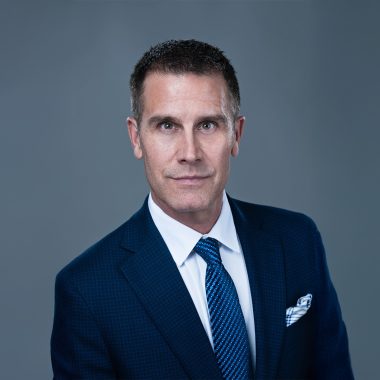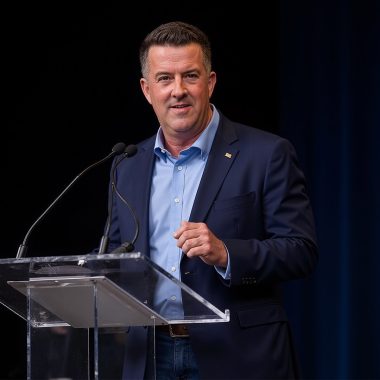Resilient supply chains are built on fundamentals like safety, quality, real-time data and flexible, well-aligned operations, all reinforced by strong teams and effective tools. Lisa W. Brown, SVP of Supply Chain, Global Operations and Business Transformation for the Wine & Spirits Division at Constellation Brands, emphasizes that resilience is not just protection but a growth strategy that helps companies outperform competitors during disruption.
Having spent more than two decades leading supply chain and operations across CPG, pharmaceuticals, food and beverage, and e-commerce, she knows what makes a supply chain not only efficient but resilient enough to propel growth. “As leaders, we’re not just building systems, we’re building confidence,” Brown says. “Resilience comes from knowing your teams, your partners and your data can support you when the unexpected happens.”
Brown’s journey started on the factory floor where she was responsible for a team, a line and a product that had to run flawlessly every single shift. Those early days taught her not just the mechanics of production but the rhythm of operations, the pressure of real-time problem solving and the weight of decisions that directly affect safety and quality.
“Starting out on the line as a production supervisor shaped everything,” she shares. “Every role after that expanded my responsibilities, but it also built my understanding of what the work actually takes.” That operational fluency is central to how she leads teams today. With end-to-end supply chain ownership, she now oversees every function she once touched individually. It gives her an instinctive sense of where capability gaps exist and how to close them.
The real mark of an effective supply chain is visible when teams look back together at a major win. “It’s refreshing to reflect on an accomplishment and see the pieces come together,” she says. “You’ll always have obstacles. It’s how you overcome them and prevent them from recurring.”
What Defines a High-Performing Supply Chain
Building a great supply chain depends on getting a few fundamentals right. “Safety and quality come first. Customer needs come second. Cost savings come third,” she explains. “When you look through that lens across every part of the network, you reinforce what you want your brand to stand for.”
The connection between these priorities is key. Brown often describes them as the stabilizing anchors of any global network. When safety slips, quality follows. When quality dips, customer trust erodes. And when customer trust falters, cost savings become irrelevant because the business is already losing ground. “When your foundation is strong, you respond faster. You recover faster. And your teams are more confident making decisions,” she says.
Why Resilience Fuels Growth
Resilience is what happens when the fundamentals don’t just support the business on a good day but enable it to keep winning when conditions turn. The need for resilience has accelerated as global disruptions multiply. “We’ve faced the COVID-19 pandemic and now tariffs and conflicts that emerged with no warning,” she says. “You have to prepare for the unknown and for what might be catastrophic.”
Resilience is more than risk mitigation. It protects presence in the market. “Your shelf space may go down, but you still want presence,” she says. “You never want to take your name off the door.” The companies that survive turbulence are those that can continue supplying, even at reduced scale, while competitors falter. In her words, “Resilience is a growth strategy. One of the fastest ways to leap ahead is to supply when others cannot.”
A major vulnerability she sees is reliance on single-source suppliers. But she also highlights a more subtle gap: a failure to simultaneously plan for both expected and worst-case scenarios. “A lot of companies don’t run parallel systems. They rely on one planner to provide all the answers,” she explains. Dual planning, supported by the right tools, helps organizations make decisions grounded in real-time data instead of hope.
Practical Steps for Stronger Supply Chains
Brown distills her approach into clear actions executives can take now:
- Strengthen visibility and real-time data. End-to-end visibility allows leaders to work with the present rather than react to outdated information.
- Build demand signals, not just forecasts. “Forecasts tell you what you think you’ll need. Demand pays the bills,” she emphasizes. Understanding the gap between the two helps determine whether to slow purchasing or accelerate sales.
- Prioritize a strong S&OP rhythm. Brown sees Sales and Operations Planning as a strategic forum rather than a recap session. “You should spend very little time talking about yesterday,” she says. The real value lies in aligning on current performance, upcoming needs and long-term capability.
The Role of Technology, Data and AI
Brown believes technology will be indispensable, but cautions executives against chasing trends. “It’s not about what’s newest. Many tools don’t deliver the result you need,” she says, encouraging companies to fully explore capabilities in systems they already use. “If you’re an SAP company, there are modules people never even look at. They already speak the team’s language.”
She pushes back against “dual-system fatigue,” or layering new systems on top of existing ones. To avoid this, she advises leaders to invest only when vendors can prove that a system will produce the dashboards, reporting and insights required for better decisions. And always involve the people who will use the tools daily.
Leading with Resilience
True operational strength comes from flexibility, supplier partnerships rooted in trust, and metrics that illuminate opportunities rather than assign fault. Brown’s own leadership style reflects this philosophy. “I don’t candy coat much,” she says with a laugh. “But I believe in capability building. I hire for what people can grow into.”
Resilience, in her view, is a forward-moving posture rather than a defensive one. It is the ability to stay steady when disruption hits and to accelerate when competitors falter. “When your systems, your people and your data are aligned, resilience becomes a growth engine,” she says.








